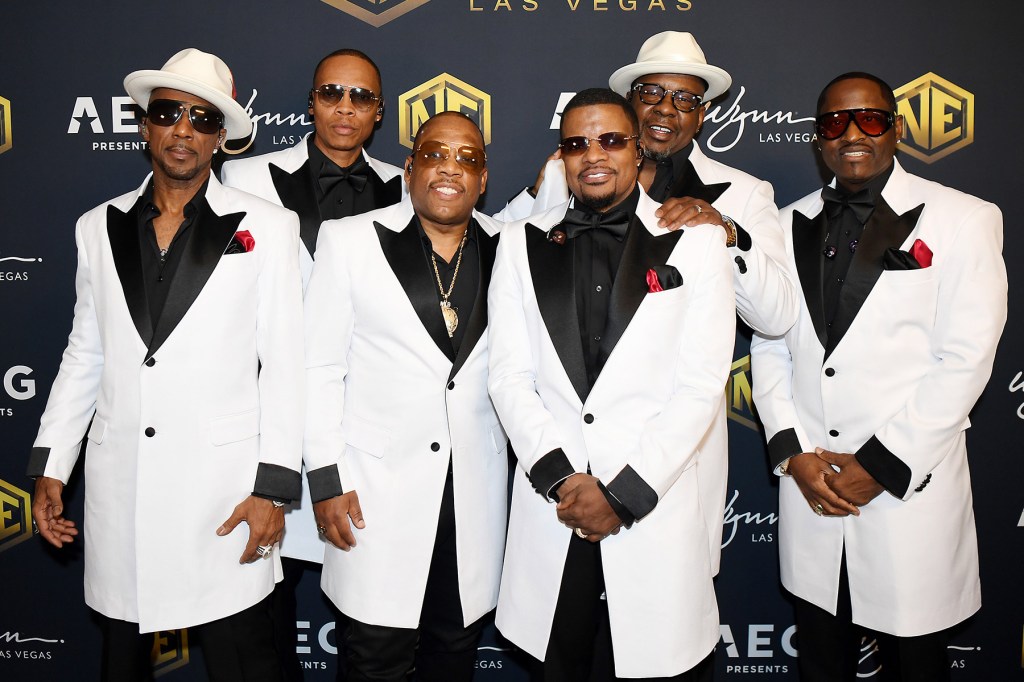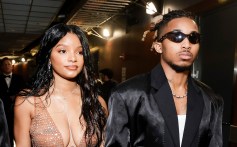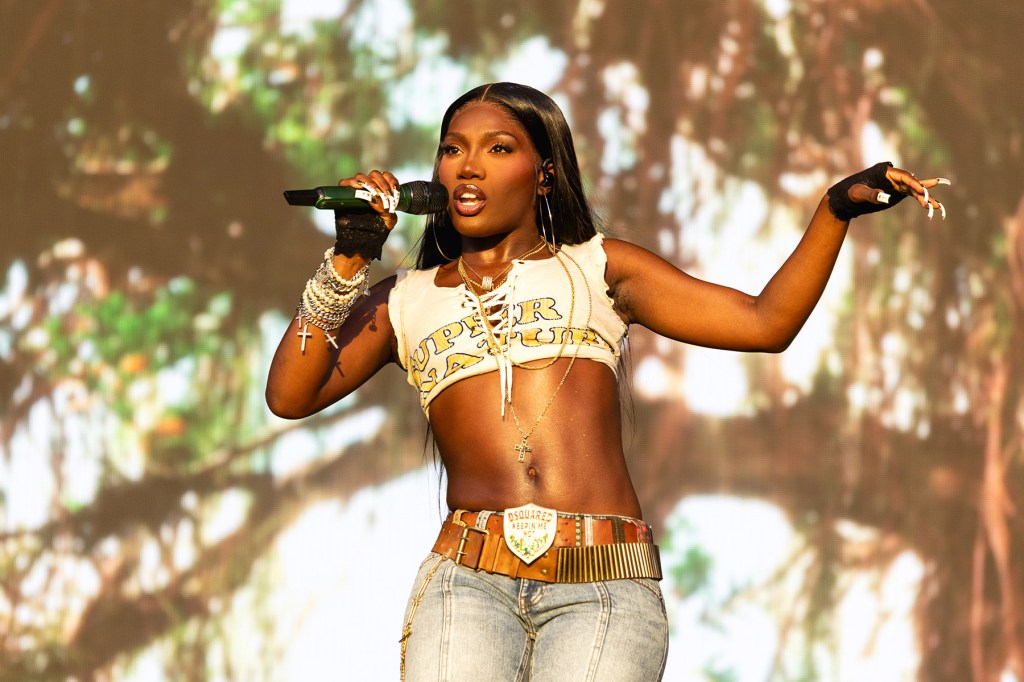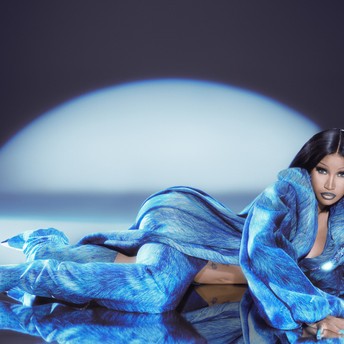Music News
Page: 98

Trending on Billboard The Only Murders in the Building crew is headed across the pond. As announced Tuesday (Oct. 28), the hit Hulu series has been renewed for a sixth season — and according to leading lady Selena Gomez, the next installment will take place in London. The news comes on the same day the […]

Trending on Billboard
Over 40 years since She’s So Unsual rocked the Billboard charts, Cyndi Lauper is still inspiring new generations of pop stars — take Chappell Roan‘s word for it.
Ahead of inducting Lauper into the Rock & Roll Hall of Fame on Nov. 8, Roan took a moment to reflect on the different ways the “Girls Just Wanna Have Fun” singer inspired her approach to pop music and performance.
“I’m so excited to be inducting Cyndi Lauper into the Rock & Roll Hall of Fame,” Roan says in the clip, which was posted to the Hall’s official Instagram page and featured Lauper leaving heart-eye emojis in the comment section. “She has inspired me with her fashion, her hair, of course, her makeup, her music. I actually auditioned with ‘True Colors’ for America’s Got Talent when I was 13! I didn’t make it, but the song is still incredible.”
Roan, who achieved a culture-shifting breakthrough in 2024, bears several musical and aesthetic similarities to Lauper. “Hot to Go,” a Hot 100 top 20 hit (No. 15) from her smash debut album Rise and Fall of a Midwest Princess, pulls directly from Lauper’s relentless synthpop playbook. Plus, both singers are also winners of the prestigious best new artist Grammy; Lauper won in 1985 and Roan followed four decades later in 2025.
After the 2024 MTV Video Music Awards, where Roan mounted a Joan of Arc-themed performance of “Good Luck, Babe,” Lauper praised the breakout star’s “performance art.” “And it’s visual, it’s so visual,” she added during her appearance on Andy Cohen’s Watch What Happens Live (Sept. 15, 2024). “You know I love those visual things, obviously.”
Though Chappell has yet to release her sophomore studio album, she visited the Hot 100’s top 10 twice this year with two new songs. While the country-tinged “The Giver” reached No. 5, “The Subway,” a sweeping ballad, reached No. 3, marking the highest-peaking Hot 100 entry of her career so far. Following Lauper’s Rock Hall induction, Roan will play the final show of her Visions of Damsels & Other Dangerous Things Tour at Mexico City’s Corona Capital Festival on Nov. 14.
Earlier this month (Oct. 5), Lauper’s Hollywood Bowl-set Grammy Salute special aired on CBS and Paramount+, featuring performances from Joni Mitchell, Cher, John Legend, SZA, and, of course, Lauper herself. On Oct. 6, Lauper announced her first-ever residency, which will commence in April 2026 at the Colosseum at Caesars Palace in Las Vegas.
Check out Chappell Roan’s sweet tribute to Cyndi Lauper here.
Trending on Billboard
Travis Kelce had a big reason to do a happy dance at the Kansas City Chiefs vs. Washington Commanders game on Monday (Oct. 27) — especially with Taylor Swift in the crowd.
After scoring his 100th career touchdown — and his 83rd regular-season touchdown, which tied him with Priest Holmes for the most in the Chiefs’ history — the tight end appeared to replicate his famous fiancée’s “The Fate of Ophelia” choreography in the end zone. Similar to Swift in the music video for the Billboard Hot 100-topping track, Kelce closed his hands into fists and waved his arms up and down in celebration, meanwhile the 14-time Grammy winner excitedly cheered for him from her box suite in the upper level of Arrowhead Stadium.
“He really gave us the whole dance (TD version) AND IM SO GRATEFUL,” one Swiftie wrote on X, sharing a clip of the triumphant moment.
“Omggg he even did the ‘I pledge allegiance’ part??” another fan pointed out, referencing the “Ophelia” lyric, “Pledge allegiance to your hands, your team, your vibes.”
The account for Travis and older brother Jason Kelce’s New Heights podcast also shared a photo of the Grotesquerie star’s big catch and wrote, “Keep it [100] on the land, the sea, and the end zone,” another reference to Swift’s lyrics.
Travis’ milestone comes as the Eras Tour headliner’s new album, The Fate of Ophelia, is spending its third straight week at No. 1 on the Billboard 200. The project’s success is thanks in part to the virality of “The Fate of Ophelia,” which sparked a TikTok dance trend after Swift shared videos on the app of herself and her dancers doing the choreography.
Despite her busy album rollout, the pop star has been in attendance at her fiancé’s games throughout the season. At Monday’s match-up, she sported a red turtleneck, a matching leather skirt and heeled boots as she watched the game alongside Brittany Mahomes, who is married to quarterback Patrick Mahomes. At one point, Swift acted out swooning, possibly in response to something Travis did on the field.
Of scoring his record-tying touchdown — which also made him the fifth tight end in NFL history to ever reach three digits in TDs — Travis told press shortly after the game, “I just cherish these moments, man, being able to play at Arrowhead.”
“This place is special, man, and I love it here,” he added. “In terms of the historical stuff, I’m still looking at the next game and the next catch and trying to get better.”
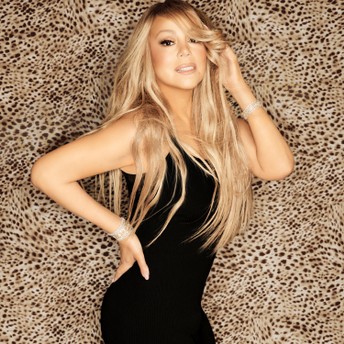
Trending on Billboard When Mariah Carey speaks, the world listens. And on Tuesday (Oct. 28), with a cheeky video shared to her official social media pages, the music legend reminded fans that it’s not time for Christmas just yet. Explore See latest videos, charts and news For years, Carey has ushered in the holiday season […]
Trending on Billboard AI music is no longer a fantasy or niche curiosity among internet sleuths — it’s here, and it’s already beginning to have an impact on Billboard’s charts. In just the past few months, at least six AI or AI-assisted artists have debuted on various Billboard rankings. That figure could be higher, as […]
Trending on Billboard New Edition have announced that they’ll be hitting the road in 2026 with Boyz II Men and Toni Braxton. The legendary group announced via a press release that they’ll kick off The New Edition Way Tour at the Oakland Arena in California on Jan. 29. From there, all three acts will head […]
Trending on Billboard
Halle Bailey and DDG have temporarily agreed to share custody of their son and drop domestic violence claims against each other, putting a halt to the musicians’ messy legal battle after months of back and forth.
Bailey and DDG (Darryl Dwayne Granberry Jr.) had been fighting in family court since this summer over custody of their nearly two-year-old child, Halo. The proceedings got ugly, with Bailey accusing the 28-year-old streamer and rapper of physical abuse and DDG claiming the 25-year-old singer and actress is mentally unstable.
Related
But the two artists have put their differences behind them, at least for now. A settlement docketed on Monday (Oct. 27) sets forth a temporary custody arrangement lasting for the next four months, and Bailey and DDG agree to mediate in “good faith” to reach a more permanent plan afterwards.
The settlement also sees both Halle and DDG dropping their competing requests for domestic violence restraining orders (DVROs) against each other. However, both sides reserve their rights to revive these allegations “upon a further incident of abuse.”
“Each party further agrees that should a future incident of abuse occur that postdates the dismissal of the instant DVRO requests, the fact that the parties dismissed her/his DVRO request shall not be prejudicial to the party seeking new orders,” reads the agreement. “The dismissal is for settlement purposes only and may not be used as evidence against the party(s) seeking new orders.”
Reps for Bailey and DDG did not immediately return requests for comment on Tuesday (Oct. 28). This is not surprising, as the settlement mandates that “the parties shall not publicly discuss the terms of this stipulation or the litigation between them.”
Related
Bailey and DDG dated between 2022 and 2024, and Halo was born at the end of 2023. Their court dispute began this past May, when Bailey filed a petition claiming DDG had physically attacked her multiple times in Halo’s presence. In one such instance, Bailey alleged that DDG pulled her hair, slammed her face on a car steering wheel and chipped her tooth.
DDG denied these claims and brought a counter-petition of his own in June, alleging that Bailey was actually the abusive one and had repeatedly threatened self-harm as a means of emotional manipulation. Bailey responded that she struggled with her mental health in the past but now has these issues under control.
Bailey was given court-ordered custody of Halo while the litigation played out. She’s retaining primary custody under Monday’s settlement agreement, while DDG gets the child twice a week and two weekends a month. They will split holidays.
The former couple agrees in the settlement not to post any photos or videos of Halo online. There are also a number of guardrails to govern their relationship; neither one is allowed to disparage the other in the child’s presence, they can only communicate via a special co-parenting app, and Halo should always be dropped off with the other parent at a public park.
“All exchanges shall be peaceful and polite, with the custodial parent handing the child to the non-custodial parent. (A polite hello and goodbye is acceptable),” reads the settlement.
Trending on Billboard Doechii says her continuous slide malfunctions on her tour are not deliberate, and that it just keeps happening. Doechii hopped on Instagram on Sunday (Oct. 26) to clear up the drama surrounding her slide. 50 Cent was among users online who trolled the rapper for getting stuck halfway down the slide during […]

Trending on Billboard
Need an early indication that a World Series game at Dodger Stadium is going to extend late into the evening? Seeing Brad Paisley step up to perform the national anthem just might be a clue.
Explore
See latest videos, charts and news
The country artist performed the U.S. national anthem at Dodger Stadium preceding a matchup between the Los Angeles Dodgers and the Toronto Blue Jays on Monday night (Oct. 27), and the game ended in extra innings — marking the fourth time a World Series game with Paisley playing the national anthem went into extra innings, according to Major League Baseball. This time, during the 18th inning, the Dodgers pulled ahead for a 6-5 victory.
Paisley now has been the anthem singer prior to both of the World Series’ longest games, which each ending in 18 innings.
Each of the four times Paisley has played the national anthem prior to a World Series Game, the game has gone into extra innings. Paisley sang the anthem last year for Game 1 of the World Series, a matchup between the Dodgers and the New York Yankees that lasted 10 innings. In 2018, he performed “The Star-Spangled Banner” before Game 3 of the World Series, prior to a game between the Dodgers and the Boston Red Sox; that game lasted 18 innings. In 2017, he sang the national anthem for the first time at the World Series, in Game 2 before a match between the Dodgers and the Houston Astros, which went for 11 innings.
Though Paisley has yet to comment on his seeming penchant of playing before extended games, Kimberly Williams-Paisley, his wife and actress, chimed in on social media, commenting on a video of the country singer playing the anthem before the game, which also happened to take place the day before his 53rd birthday on Oct. 28.
“Is it your fault it went 18 innings again? Nice of the @dodgers to win for your birthday!” Williams-Paisley wrote.
Some of Williams-Paisley’s fellow Hallmark Channel actors also chimed in, including Kris Polaha, who commented with fire emojis, and Tyler Hynes, who wrote, “Knew he was a Jays fan.”
Paisley has just added a slate of European dates to his tour for 2026, including stops in Finland, Germany, Norway, Sweden and Switzerland. He is also set to release the holiday album, Snow Globe Town, on Nov. 7.
Trending on Billboard
Don’t expect a seven-year drought in between albums for Cardi B. The Grammy-winning rapper is promising to drop another project in 2026.
Cardi hopped on X Spaces on Monday (Oct. 27) and explained how she doesn’t plan to drop a deluxe or remix album for Am I the Drama?, but instead she’s looking to release another project within the next year.
“I see you guys asking for a deluxe or asking to do a remix album like Charli [XCX] or something,” she said. “Unfortunately, I am not doing none of that… What I gave y’all is what y’all getting.”
Explore
See latest videos, charts and news
Cardi continued to tease her next era: “However, I want to put out a project another album in less than a year, so I’m really planning on that. I want a new era. I kinda know what I want it to look like. It’s gonna be different from Am I the Drama?”
Now, plenty of Cardi promises came and went in the seven years between Invasion of Privacy and Am I the Drama?. The Bronx native’s sophomore album finally arrived in September and debuted atop the Billboard 200 with 200,000 total album-equivalent units earned.
After giving birth to baby No. 4, Cardi will hit the road for her first headlining tour in February. The Little Miss Drama Tour kicks off on Feb. 11 in Palm Desert, Calif. She’ll then head through major cities including Las Vegas, Los Angeles, Seattle, Houston, Detroit, Chicago, New York, Philadelphia and Washington, D.C, before finishing up on April 17 in Atlanta.
Later in the Spaces, Cardi explained how she’s ready to get back to her pre-pregnancy self after giving birth.
“You see how I was in a strict schedule while I was doing the rollout? Well, that is the same way that I’m going to be when I give birth,” she said. “I want to be a bad b—h. I feel really beautiful being pregnant, but I want to go back to bad b—ing. So I need to tighten up my body.”

 State Champ Radio
State Champ Radio 